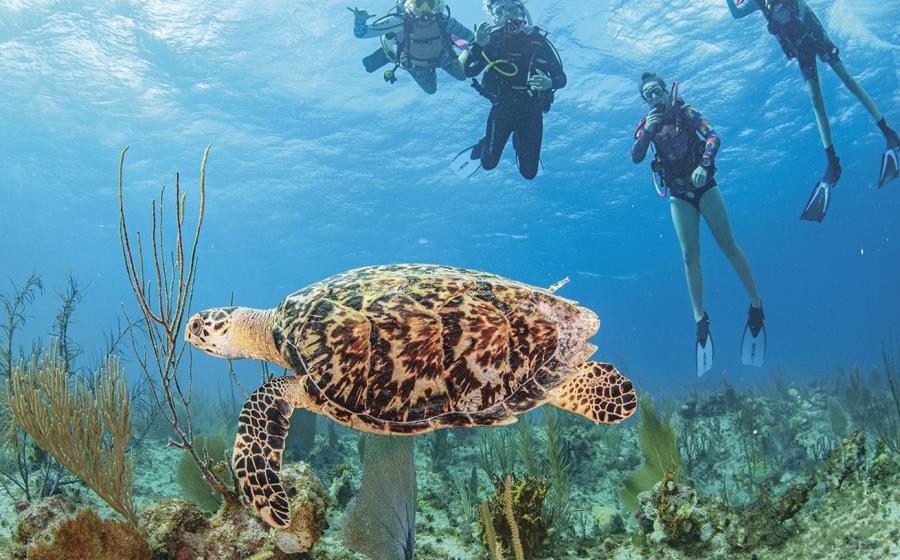Scuba Diving in Hawaii's Jurassic Park: Kauai
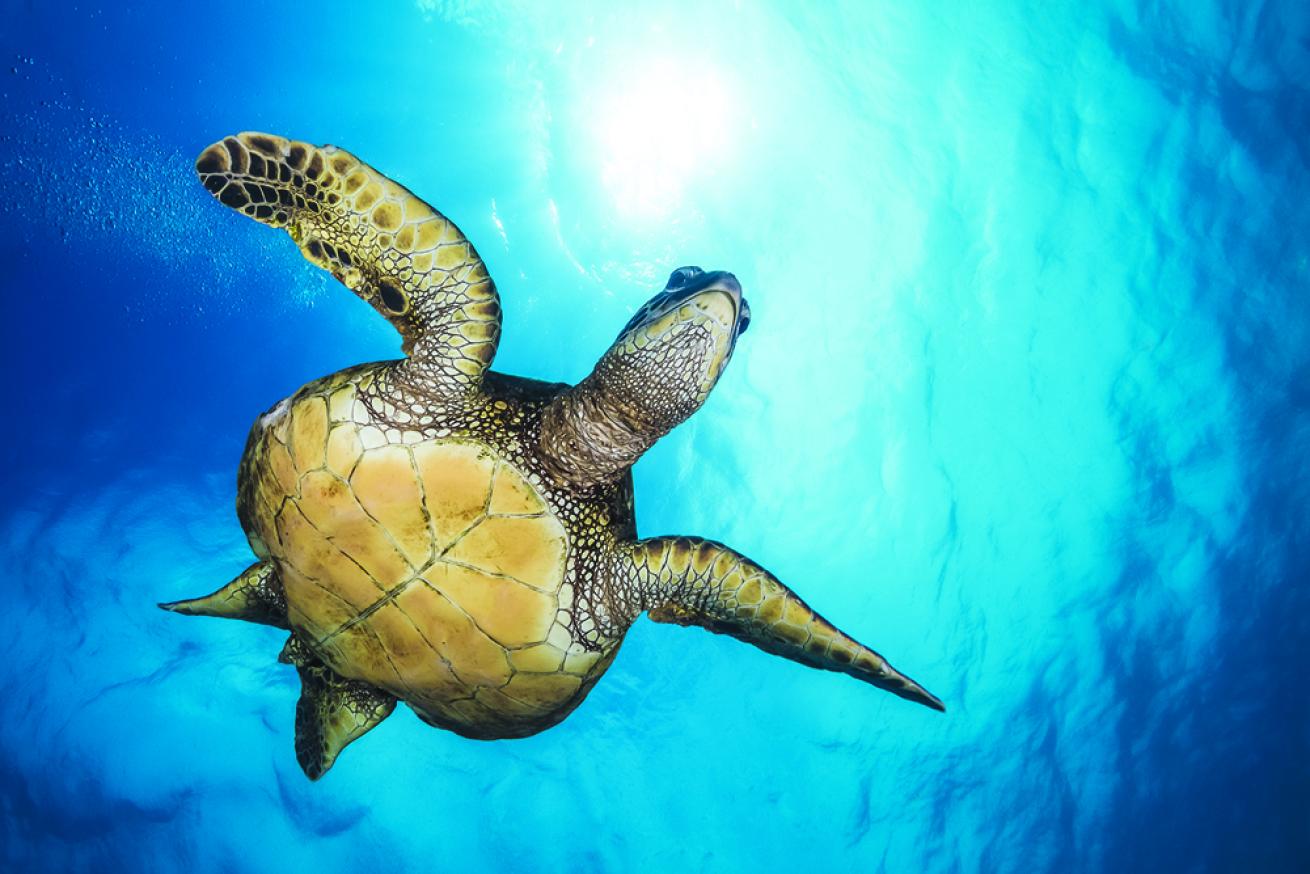
Masa UshiodaIn Hawaii, green sea turtles are known as honu. This one swims off Poipu at Sheraton Caverns, a site known for attracting tons of green sea turtles.
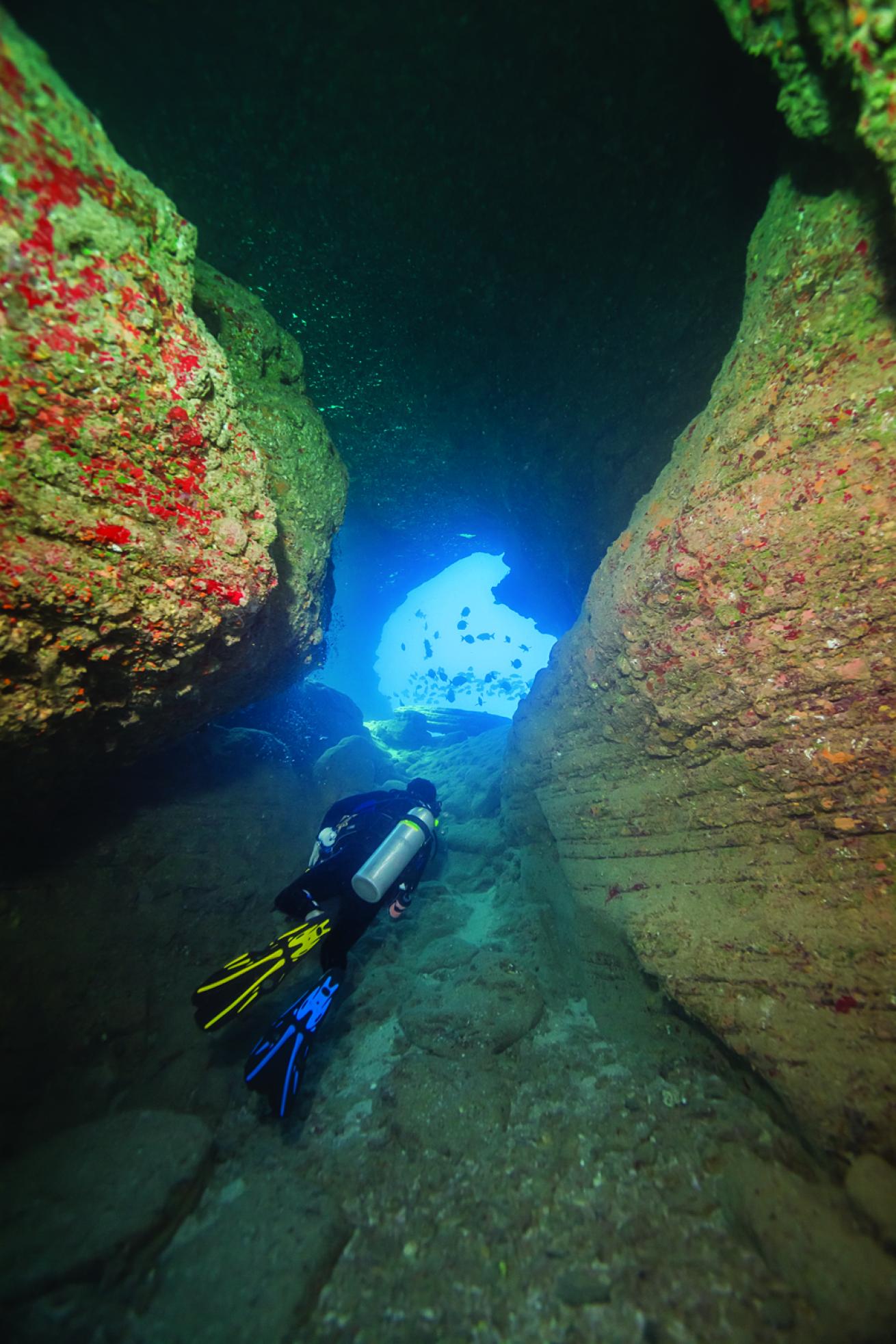
Masa UshiodaA diver explores one of the numerous swim-through’s at the dive site Ni’ihau Arches, where divers can see lobsters, octopuses and reef fish.
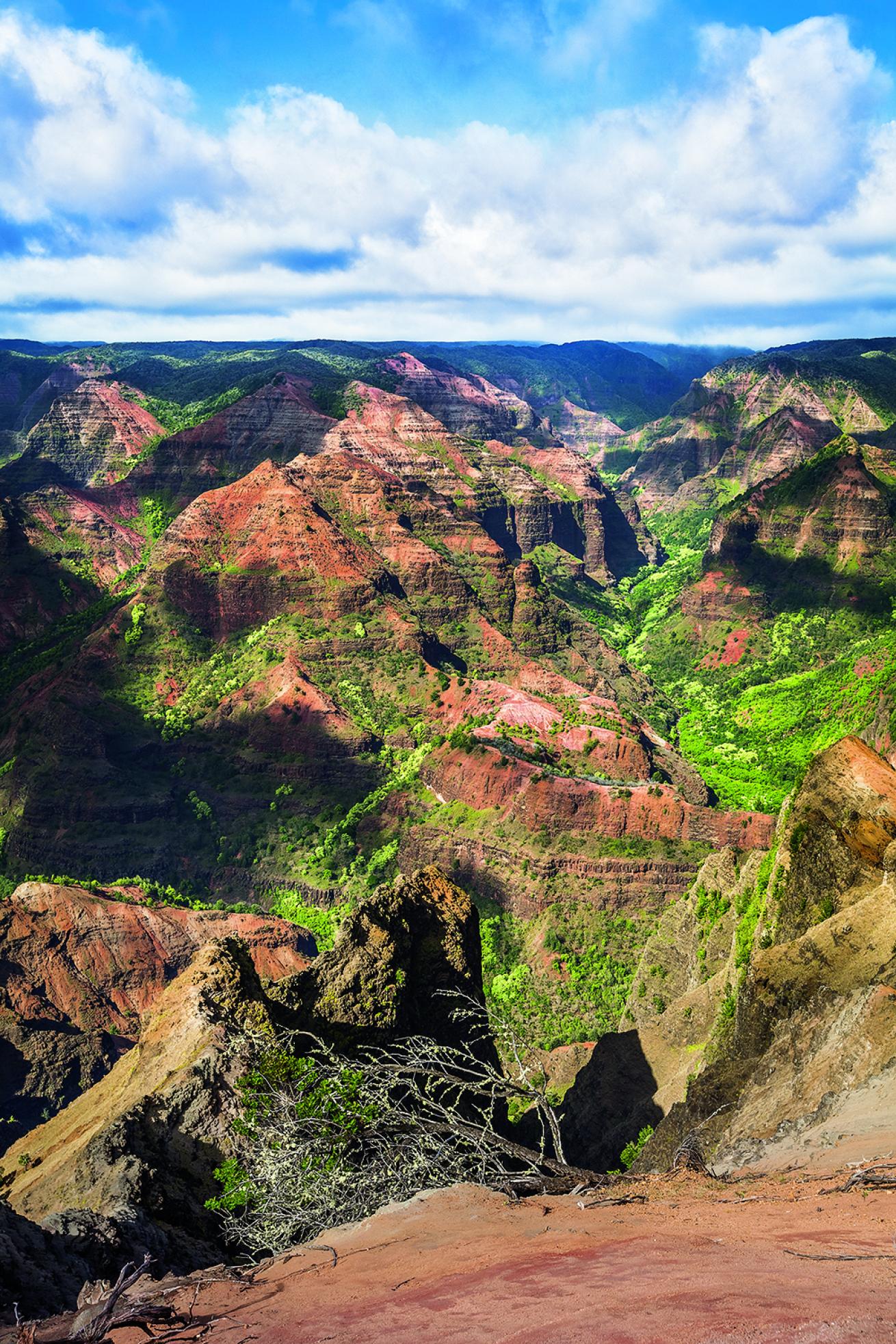
Masa UshiodaKauai’s Waimea Canyon — known aptly as the Grand Canyon of the Pacific — glows like a scene straight out of the Southwest.

Masa UshiodaThe view from inside the “TV Cave,” a small cavern at Ni’ihau Arches that is named for its wide-screen TV-like opening.
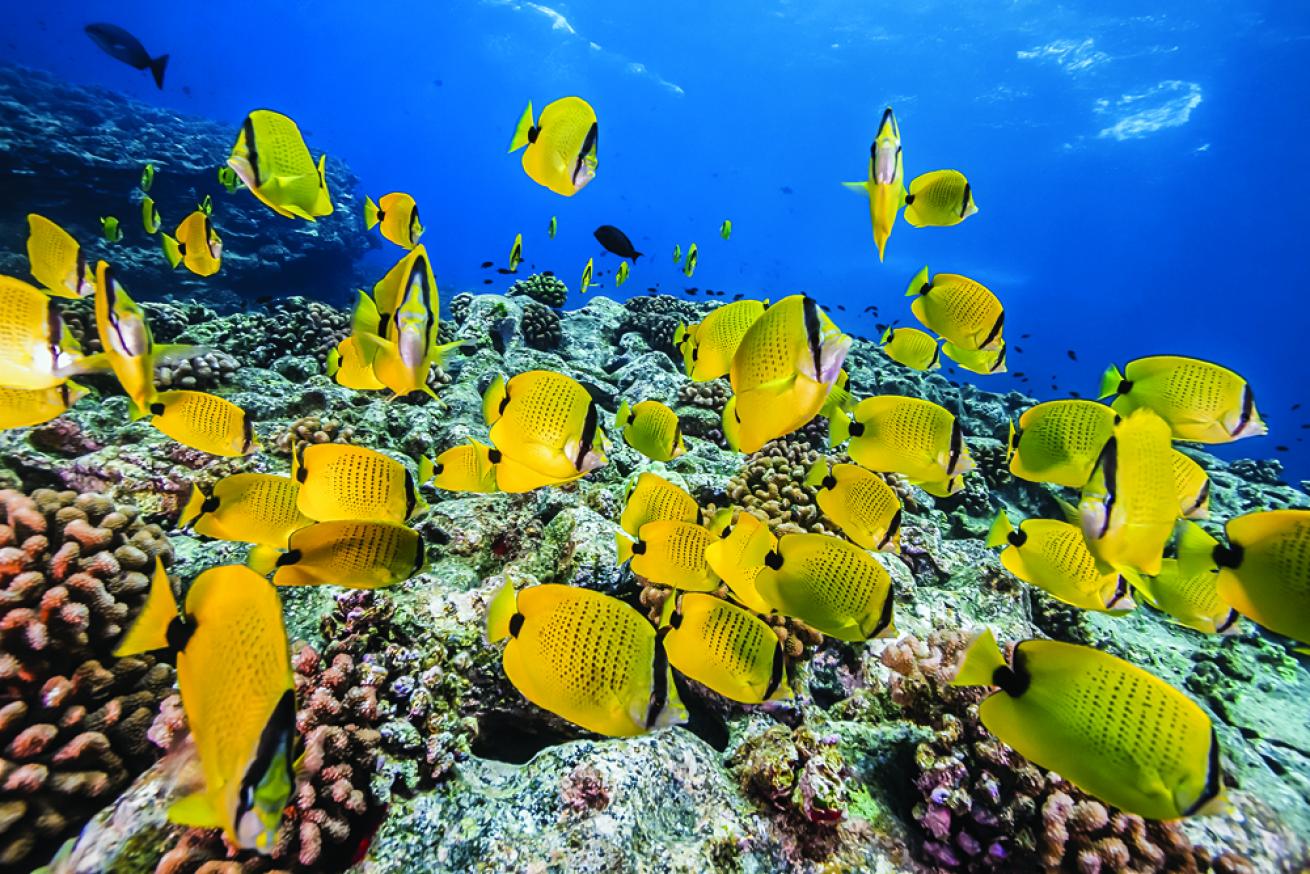
Masa UshiodaMilletseed butterflyfish are endemic to the Hawaiian Islands.
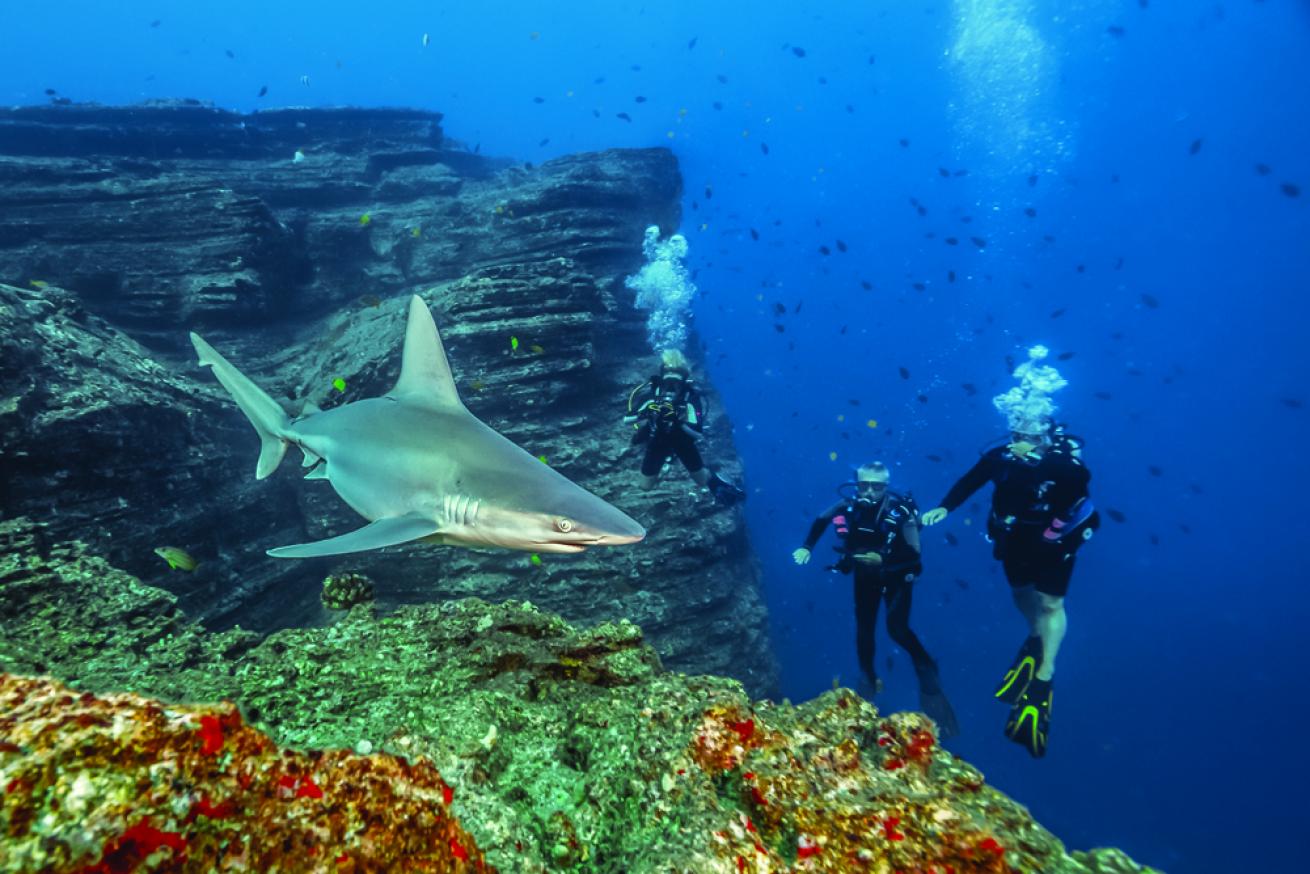
Masa UshiodaA sandbar shark cruises the reef off Lehua, a small island north of Ni’ihau that’s a designated state seabird sanctuary.

Masa UshiodaBicolor Hawaiian longfin anthias — endemic to the islands and Johnston Atoll — prefer deeper water.
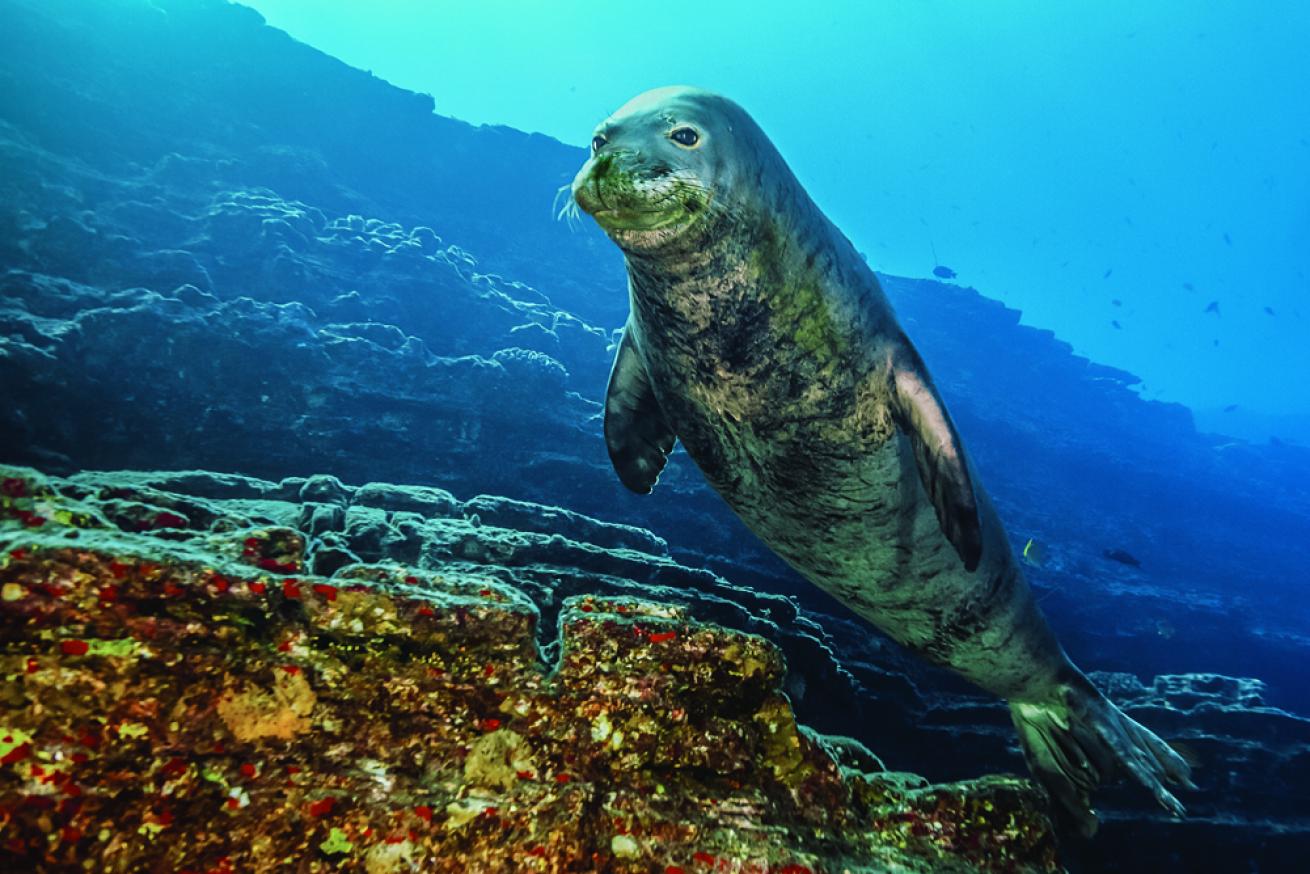
Masa UshiodaThe endangered Hawaiian monk seal is endemic to Hawaii and the only pinniped found in its waters. Naturally curious, monk seals often swim close to divers.

Masa UshiodaSouth Pacific was filmed at Tunnels Beach, which offers golden sand, views of the jungle and snorkeling on its inner reef.
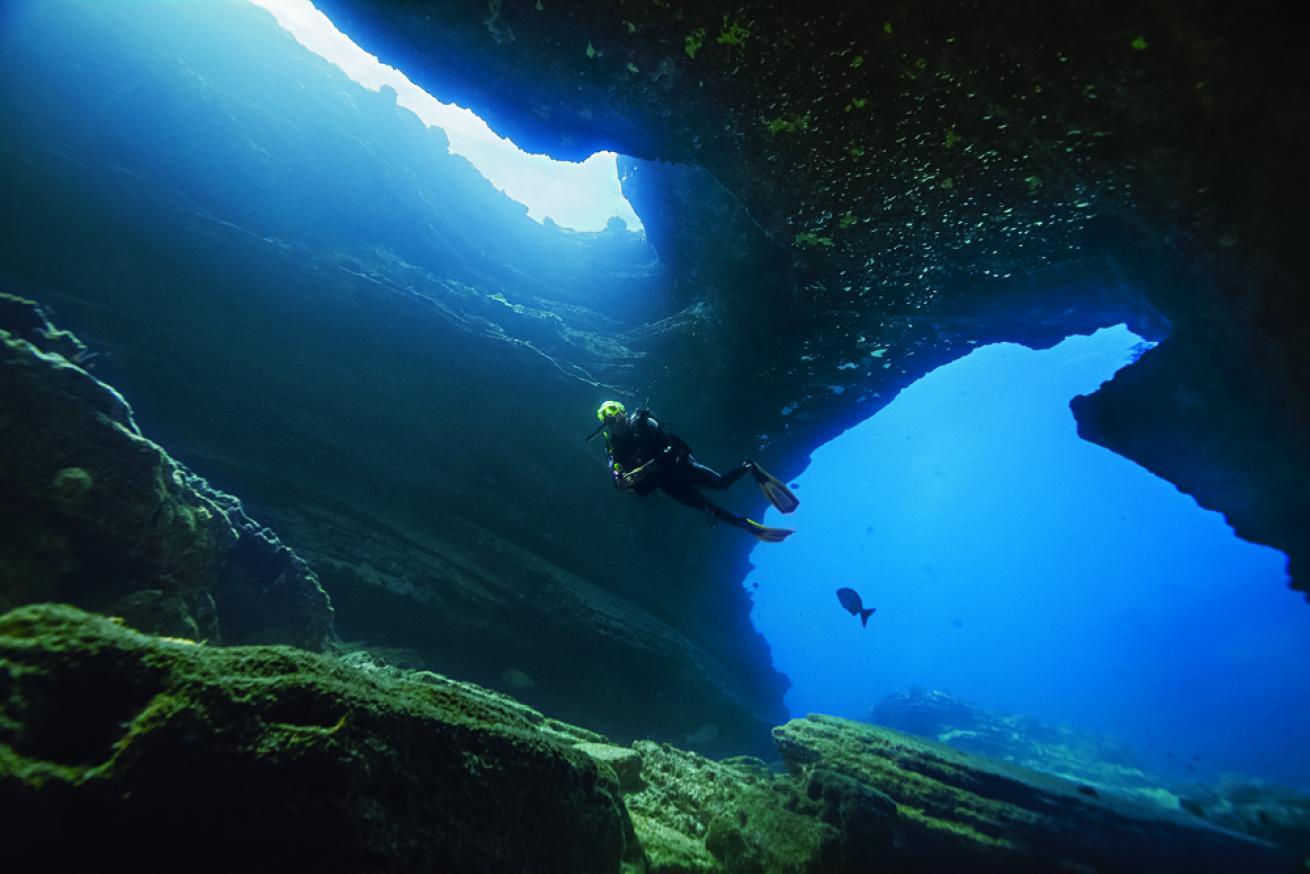
Masa UshiodaWhen diving Ni’ihau Arches, bring your camera but leave your strobes behind, and take advantage of the natural light that filters through the numerous openings.

Masa UshiodaThe canyon of Pyramid Point, located between Ni’ihau and Lehua Rock.
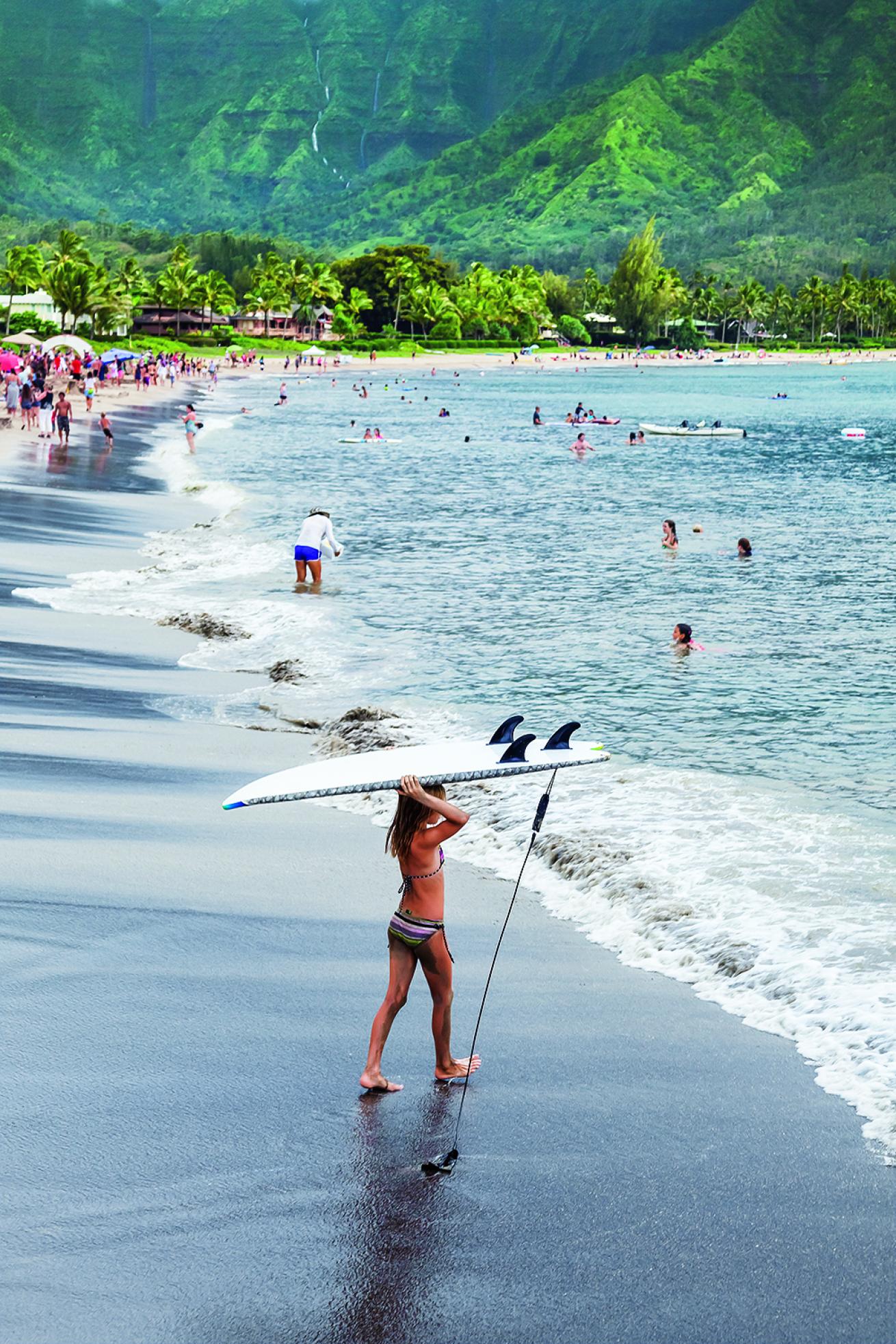
Masa UshiodaHanalei Bay Beach on Kauai’s North Shore.
People think of islands as small places, but certain islands are not small at all, and once you visit, your perspective will be forever changed. Kauai is such a place. Yes, it is beautiful. There are waterfalls like strands of silver-blue tinsel, vertiginous valleys, knife-edge ridgelines, cartoon-blue skies, and vegetation so dense and fecund that it threatens to absorb you. It’s ridiculous. Even the dirt is lush.
But most of all Kauai is a place of immensities: vast canyons (Waimea Canyon is 10 miles long and more than 3,600 feet deep), jaw-dropping waterfalls, and fall-away spaces. Gaze down from the edge of Kalalau Lookout on the famed Na Pali Coast, and try to keep your knees from jellying. Kauai is the oldest of the Hawaiian Islands, and Mother Nature has had time to perform some spectacular handiwork, both above and below the waterline. Taking it all in, you feel the power of something big.
On a dawn morning overhung with clouds tinged with pink, photographer Masa Ushioda and I set out for the island of Ni’ihau with Seasport Divers. Seasport is owned and operated by the soft-spoken Marvin Otsuji, who employs some of the most ebullient folks you’ll ever meet. And though the diving off Kauai’s shoreline — green sea turtles and Hawaiian spinner dolphins at Sheraton Caverns, swarming blue-stripe snappers at Koloa Landing, and schools of eye stripe surgeonfish and the lovely endemic bandit angelfish at Fast Lanes — is good fun, nothing turns the Seasport staff more euphoric than a trip to Ni’ihau.
As Anela Kai slides from its berth at sleepy Kukuiula Harbor, Jackie McCall sums it up tidily. “You see so much marine life out there. Ni’ihau is the Super Bowl of diving.”
On a good day, it is a two-and- a-half-hour boat ride from Poipu, 17 miles southwest across the Kaulakahi Channel to Ni’ihau. As we make our way across Kaulakahi Channel, Ni’ihau grows on the horizon. I stand on the bridge beside Ryan Ferry, Anela Kai’s captain, sparkling blue waters surrounding us. Inhabited only by native Hawaiians, the Forbidden Island is home to anywhere from 50 to 170 residents. No one really seems to know. How can you not love the mystery?
Ferry nods toward the hummock-filled isle. “A whole lot of nothing going on out there,” he says.
Once we descend, though, all manner of glorious hell is breaking loose, a Super Bowl on serious amphetamines. I slip beneath the water with Andrew Ellis, Seasport’s senior boat captain. Today is his 51st birthday — “There’s no place I’d rather be than right here” — and I like him instantly. He has a mischievous look, like a pigtail dunker, and a refreshingly honest manner.
Before the first dive, he looks at me and nods. “I’ll take all you over-40 guys, since you can’t see any of the small things anyhow.”
Beneath Ni’ihau’s waters, divers find an unexpected visitor. As we descend through crystalline-blue waters — the island has no runoff — at a spot dubbed Vertical Awareness for its nearly sheer 280-foot lava wall, the “visitor” makes his appearance. Parts of terra firma Kauai were used in the filming of Jurassic Park, but Hollywood missed the real prehistoric playground.
Out in the blue, looping merrily but moving toward us fast, is Oscar, the resident Hawaiian monk seal. Oscar, it seems, is a bit of an attention hog. “The best way to get his attention,” counsels McCall, “is to not pay attention. He hates to be ignored.” Those next to appear care little for our admiration. The sharks morph, as sharks do, out of the shadows; gray reef sharks, a silky and several sandbar sharks. The sandbar sharks, which Ellis describes, post-dive as “fairly robust,” seem to care for our presence least of all. They are powerful, pugnacious-looking creatures, shaped more like kegs than sharks, but nature is always full of surprise. The loveliest sight is watching them undulate straight up the sheer lava wall, thick as Irish brawlers and more graceful than ballerinas.
On the next dive, a drift along Lehua Rock, it is sensory overload again. A monk seal is often close enough to touch. How do I put this in poetic terms? It was nuts. Big things. Everywhere.
When we finally plop down on Anela Kai’s benches, Ellis shakes his head. “That was a little fast and furious,” he says. “It’s so fun when diving goes off like that. First it was the anthias, then the sandbar sharks, then the monk seal.”
His voice trails off. It is not a dive briefing. He is talking to himself.
In the week we spend exploring Kauai, Ushioda proves the ideal traveling companion, observant and adaptable, with a keen sense of humor and a willingness to turn down any road. And so we do. We stay at Whaler’s Cove in Poipu, an assemblage of luxurious condos smack-dab on the water beside Koloa Landing (as a nice touch, they also care for the entrance leading into the Landing), and on the days we aren’t diving, we explore the island.
Once you leave the main towns, Lihu’e and Kapa’a, Kauai is one of those rare places where almost every meandering road leads to something memorable, usually a hidden beach — my favorite, Moloa’a, on the way to Hanalei and North Shore, has a lovely crescent bay and hand-scrawled sign “Do Not Feed the Hippies” — or a hiking trail, or a waterfall of untoward beauty. An oasis in the foliage is a fresh-fruit stand selling pineapple frosties you would trade your mother for. At Banana Joe’s Fruit Stand, just north of Kilauea, we enjoy pineapple frosties (sorry, Mom) and read the signs posted on the corkboard. Join light warrior and breatharion Jasmuheen to experience the amazing grace of the Madonna frequency. Apparently somebody is feeding the hippies.
We also take a sunset cruise along the Na Pali Coast with Captain Andy’s Sailing Adventures, and tour Allerton Garden — more than 80 percent of the approximately 1,200 plants, flowers and ferns of the Hawaiian islands grow nowhere else on Earth.
Mother Nature has had time to perform her patient work of erosion on Kauai, so there is also much that is astonishingly rugged and wholly inaccessible, unless you are a wild pig or a pig hunter. (I only half jest. Once, hiking what I considered to be a remote trail on another visit to Kauai, I was stunned to see a pig hunter, crossbow in hand and dogs in tow, plunge out of what appeared to be an impenetrable wall of brush. “Howzit bra?” he asked, before disappearing through a similar wall on the other side of the trail.) This is why so many people opt to see Kauai from the air.
We sign on with Jack Harter Helicopters. I have a healthy respect for high places, and when I discover that the helicopter lacks doors, I’m proud to say I don’t weep, although I believe the pilot’s seat now has permanent fingerprints that bear a remarkable likeness to my own.
Like its undersea realm, Kauai from the air is a testament to the grand-scale landscapes of the island, an Eden-like sprawl of rugged canyons, beaches that drift forever, and stomach-dropping cliffs — especially along the Na Pali Coast, where our pilot, Ben, dips the chopper at a nauseating angle and buzzes close to the cliff sides.
“If you get close enough, you can see goats,” Ben shouts into his headset. “Pretty amazing that they can get into some of these places.”
It is thrilling and humbling, all this immensity. To see the patient scourings of wind and water — now, after millennia, a sculpture of fairy-tale grandeur — is to understand your small place in this world. As we tour Allerton Garden, our guide informs us that the gardens have been called an organized jungle. Man brings order to things. But we cannot bring order everywhere, and Kauai reminds you of this in a big way.
Nor can you bring order to the sea, another reason divers so love the place. Few places are as unruly as Ni’ihau, which is why, on one of our last days, Ushioda and I return. Certainly Kauai’s near shore diving is entertaining, but from late spring until early fall — after that the crossing gets too rough — Ni’ihau is Kauai’s signature jewel. Who wouldn’t leap at the chance to experience two Super Bowls back to back? Again we dive Vertical Awareness; again we drift above Lehua Rock; again big things swim all about. Between dives, mantas wing past, and everybody plunges overboard in snorkel gear.
Small things can be big things too. On our last dive among the caverns and tunnels of Ni’ihau Arches, Ellis motions to me, and I follow him into the darkness of a cave. It is still and peaceful — as underwater caves are — and then, when Ellis swings the beam of his flashlight around the cavern, life explodes. In the ethereal silence, lobsters move, their antennae waving, and cowries rest on a rock outcropping like a tangled shell necklace. In another crevice, Ellis’ beam finds endemic pipefish. Black corals hang from the ceiling. It is ethereal — a merry but silent world in a place tucked away.
Here on the Forbidden Island, you feel both inconsequential and reassured: Its immense power has been here all along, and it will be here long after we’re gone.
Dive Kauai and Ni’ihau with Seasport Divers.
Want to learn more about Hawaii? Read our Hawaii Dive Guide HERE.





